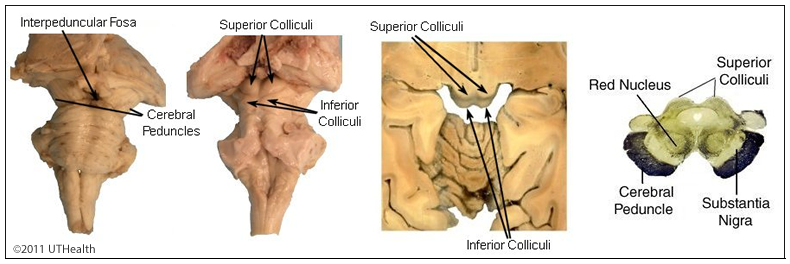Lab 10 (ƒ2) - Internal Organization of the Brain
The Brainstem - Overview
The brainstem is continuous with the diencephalon rostrally and the spinal cord caudally. It contains fiber tracts that ascend to diencephalic and telencephalic levels and that descend to the spinal cord. It also contains the nuclei associated with cranial nerves III to XII. These nuclei will be covered in some detail in later exercises. For now just learn the names and locations of those printed in bold type. Recall that for descriptive purposes, the brainstem is subdivided into the midbrain, which is continuous with the diencephalon, the pons and the medulla.

In the anterior view we see the cerebral peduncles and the interpeduncular fossa of the midbrain and the pyramids of the medulla. The superior and inferior colliculi can be seen in the posterolateral view.
Finally, examine the horizontal microscopic section to the right. This is a cut at the level of the superior colliculus. As you move from the ventral to dorsal surface note the cerebral peduncles, substantia nigra, red nucleus, and the midbrain tectum (which includes the superior colliculi). The small canal in the center of the section is the cerebral aqueduct and the gray matter surrounding it is called the periaqueductal gray.
In the following pages, we will examine the major structures of the brainstem in coronal, horizontal, and sagittal sections.
